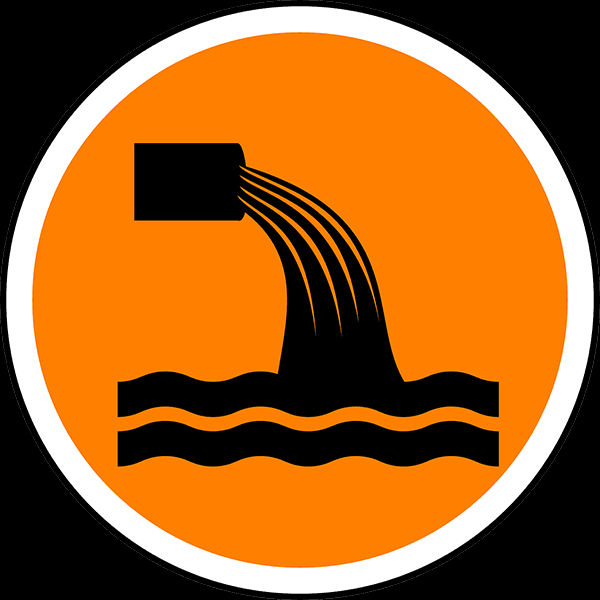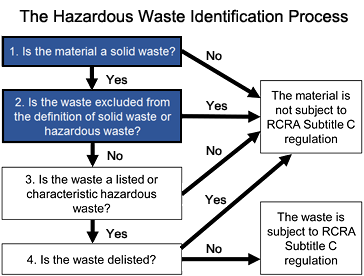8 Easy Facts About Reclaim Waste Explained
Some Of Reclaim Waste
Table of ContentsRumored Buzz on Reclaim WasteReclaim Waste Can Be Fun For AnyoneWhat Does Reclaim Waste Do?Not known Details About Reclaim Waste Reclaim Waste Fundamentals Explained
Discover the kinds, events, and types of liquid waste. Domestic sewer waste describes the waste and products from a property septic tank. This sort of waste is produced by humans in residences, schools, and other structures. This only includes sewage-disposal tanks that have a drainpipe area. The appropriate administration and disposal of domestic sewer waste require fluid waste to be transferred to a sewer therapy plant where the appropriate approaches and devices are related to cleanse and throw away waste.
Business waste typically consists of prospective hazards, such as combustible materials or a combination of liquid and strong waste products, and requires an advanced and thorough disposal process. The disposal of industrial waste commonly includes the purification of waste before transportation to make sure secure and proper disposal. Industrial waste is produced from by-products and overflow of commercial procedures and manufacturing.
This sort of waste can not use the same sewage administration transport or procedures as septic or business fluids. The commercial waste monitoring process requires the assessment and screening of liquid waste prior to it undertakes the disposal process (industrial wastewater treatment). Overflow waste is the fluid waste that comes from drainage and excess stormwater in very booming locations or cities
Runoff waste can cause contamination and flooding if not dealt with appropriately. Making certain proper waste monitoring can protect against calamities and decrease environmental harm.
How Reclaim Waste can Save You Time, Stress, and Money.
Get in touch with PROS Services today to learn more about our waste monitoring and disposal services and the correct ways to look after the liquid waste you generate.
(https://myspace.com/reclaimwaste1)Do you know what occurs to your water when you disengage, flush the toilet or drain pipes the cleaning machine? No? Well, it deserves knowing. This so-called 'wastewater' is not just a crucial source yet, after therapy, will certainly be released to our land, waterways or the sea. Used water from commodes, showers, baths, cooking area sinks, laundries and commercial processes is referred to as wastewater.

water used to cool machinery or clean plant and equipment). Stormwater, a form of wastewater, is drainage that streams from agricultural and metropolitan locations such as roofing systems, parks, yards, roadways, paths and seamless gutters into stormwater drains pipes, after rain. Stormwater moves untreated directly to regional creeks or rivers, at some point reaching the sea.
Reclaim Waste Can Be Fun For Anyone
In Queensland, most wastewater is treated at sewer therapy plants. Wastewater is transported from domestic or commercial websites with a system of sewers and pump stations, known as sewage reticulation, to a sewer treatment plant.
The Department of Natural Resources advises local federal governments concerning handling, operating and preserving sewerage systems and therapy plants. In unsewered locations, regional governments may call for homeowners to install private or home sewage treatment systems to treat residential wastewater from toilets, kitchen areas, washrooms and washings. The Department of Natural Resources authorizes making use of home systems when they are shown to be efficient.
In some new subdivisions, therapy of some stormwater to remove clutter, sand and crushed rock has started using gross contaminant catches. Wastewater therapy occurs in 4 stages: Eliminates solid issue.
Uses small living microorganisms understands as micro-organisms to damage down and remove staying liquified wastes and great fragments. Micro-organisms and wastes are included in the sludge.
See This Report on Reclaim Waste
Nutrient elimination is not offered at all sewage treatment plants due to the fact that it calls for costly specialist devices. Clear liquid effluent created after treatment may still consist of disease-causing micro-organisms - industrial wastewater treatment.

This usually suggests wastewater needs to be treated or contaminants removed prior to it can be released to waterways. The majority of wastewater streams into the sewage system. Under the Act, city governments provide approvals and permits for ecologically relevant tasks (Ages) involving wastewater launches that could have a regional effect. The department carries out approvals and permits to Ages involving wastewater launches that could have a local or statewide influence.
Some Of Reclaim Waste
Monitoring supplies accurate info about water high quality and can confirm that licence conditions are being met. The information obtained with monitoring supplies the basis for making water top quality decisions.